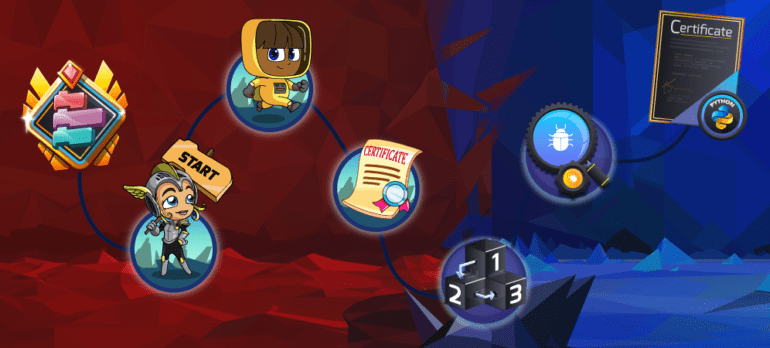TL;DR:
- Tynker introduces Tynker Copilot, an AI-driven coding tool for students aged 6–12.
- It leverages Large Language Models (LLMs) for translating ideas into visual block code.
- Copilot provides step-by-step instructions and explanations for block code fragments.
- The technology is in beta, with no official release date confirmed.
- Copilot empowers young learners to create and debug projects with ease.
- It was developed by fine-tuning Meta’s Llama2-13B model on a budget of under $10,000.
- Tynker plans to notify users when Copilot becomes generally available.
Main AI News:
In a groundbreaking development for the education sector, Tynker, the K–12 game-based coding platform, has unveiled an exciting AI-powered solution designed for students aged 6–12. Named “Tynker Copilot,” this cutting-edge tool harnesses the immense potential of Large Language Models (LLMs) to seamlessly translate students’ creative ideas into tangible visual block code structures for apps and games. This pivotal announcement comes directly from the company’s press release.
Tynker Copilot is not just another coding tool; it’s a transformational force that brings AI and education together. One of its standout features is the ability to elucidate block code fragments to young coders as they navigate the intricate world of AI-powered block coding. While the technology is currently in its beta phase, the official release date remains undisclosed, keeping the educational community eagerly anticipating its arrival.
What makes Tynker Copilot truly remarkable is its unparalleled capacity to empower children as young as six years old. Through a simple text command like “Design a space-themed knock-knock joke” or “Teach me how to build a Fruit-ninja style game,” students can now receive intricate block code outputs complete with step-by-step instructions. Moreover, when tackling the debugging process for existing projects, students can submit block-code snippets and benefit from LLM-generated natural language explanations, facilitating an enriching and dynamic learning experience.
In the words of Krishna Vedati, a prominent figure at Tynker’s parent company BYJU’s, who expressed his excitement on LinkedIn, Tynker Copilot marks “the future of coding education.” This revolutionary tool was crafted through the meticulous fine-tuning of Meta’s Llama2-13B model, accomplished with the aid of thousands of lesson examples and kid-created coding projects, all executed on a modest budget of less than $10,000.
Behind the scenes, Tynker’s Chief Technology Officer, Kelvin Chong, shared insights into the challenges they faced while integrating LLMs into Tynker’s dynamic visual block coding ecosystem. “Bringing LLMs into Tynker’s dynamic visual block coding ecosystem presented unique challenges,” noted Chong. “We fine-tuned Llama2 with AI and ML techniques to align with young coders, supporting parallel scripts, visual actors, and kid-centric features such as Physics, AR, sound effects, and Minecraft modding. As coders grow, they’re naturally transitioned towards Python.”
For eager Tynker users eagerly awaiting Copilot’s general availability, the company has assured that notifications will be promptly dispatched, ensuring that they remain at the forefront of this exciting evolution in coding education.
Conclusion:
Tynker’s innovative Tynker Copilot, powered by LLMs, signifies a significant leap forward in coding education. By offering a user-friendly interface for young students and leveraging AI to simplify the coding process, Tynker is poised to reshape the educational technology market, making coding accessible and engaging for a broader audience of young learners. This development underscores the increasing importance of AI in education and paves the way for more inclusive and effective coding education solutions in the future.

